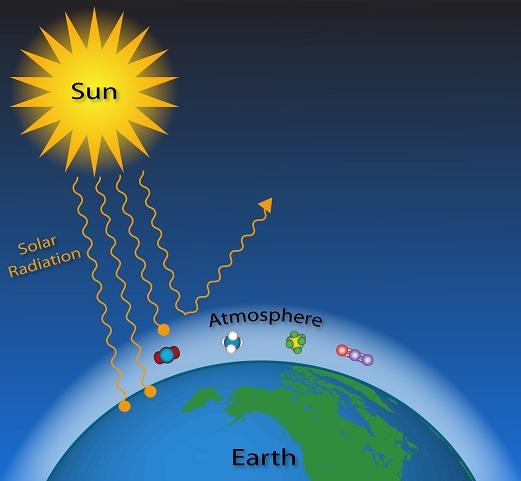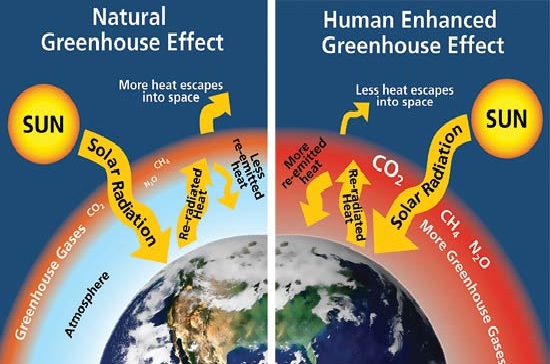Updated By: LatestGKGS Desk
Greenhouse Gas Sources, Types, Effect, Impact on Earth Environment

Any gas that allows the subliminal radiation from the sun to come to Earth, but absorbs the longitudinal radiation returning from Earth, increases the temperature of the Earth, called greenhouse gas.
The following are the naturally occurring greenhouse gases (GHG) in the environment:
Carbon dioxide (CO2) (the most prominent greenhouse gas)
Methane (CH4)
water vapour
Nitrous oxide (N2O)
Fluorinated Gases
Human-made or synthesized greenhouse gases are as follows:
Chlorofluorocarbons (CFCs)
Hydro Fluorocarbon (HFCs)
Fluorocarbons' (PFCs)
Sulfur hexachloride (SF6)
Greenhouse gases present in the Earth's atmosphere, due to the absorption of heat emitted from the Earth and an increase in atmospheric temperature, is called the greenhouse effect. In fact, due to the occurrence of a greenhouse effect, the temperature on the earth is controlled and plants, etc., get the necessary heat for their growth.
Greenhouse gases have a direct impact on the Earth's atmosphere because these gases function as a blanket for the Earth. If these gases are not present and do not absorb heat then the earth will be clouded in a cold planet and human life will not remain in its present form.
Greenhouse gases have always been present in the atmosphere and have always maintained a certain temperature of the Earth by the greenhouse effect. The naturally occurring greenhouse gases do not change the temperature of the earth at all.


